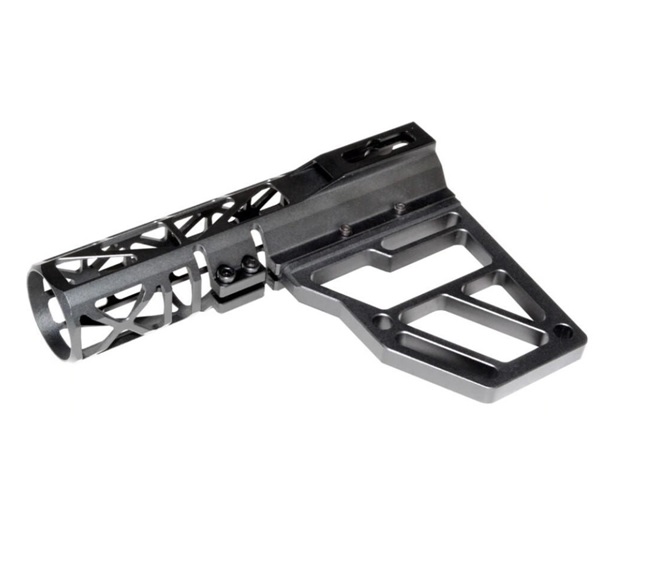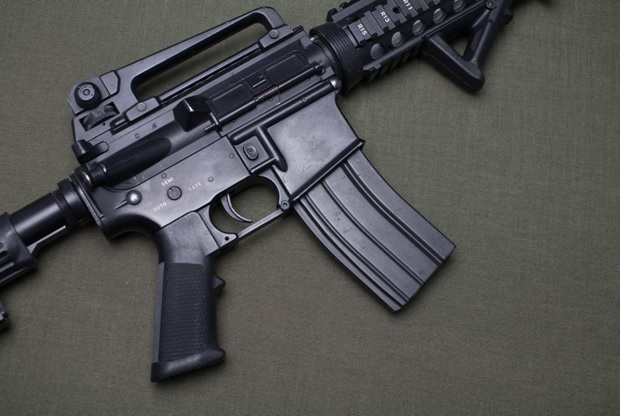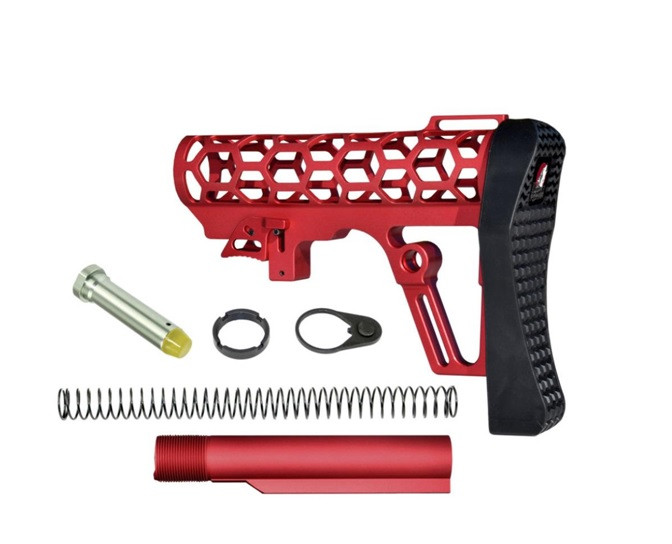You may have seen some skeletonized AR 15 parts hit the market in recent years. Skeletonization is growing in popularity, and not just in the gun industry. Just look at the popularity of the Gerber Paraframe for an example of some crossover.
But why is it such a big deal, and is the hype of the trend justifiable? We’ll break all that down and more in this post. Before the end of it you’ll know if skeletonized AR 15 parts are (or are not) for you.
The Big Draw of Skeletonized AR15 Parts
There’s really only one main justification for skeletonized AR 15 parts, and it’s this: skeletonizing parts can lighten the build substantially.
A lighter AR 15 will be more nimble and more responsive in the hand, so if you’re building a carbine-length platform or even an SBR, skeletonization is naturally going to be attractive.
It’s also a draw if you carry your AR for prolonged periods of time; in competition or at the range it can be a bonus.
Bear in mind, however, that many AR-15 parts are made from aluminum and not steel, so skeletonizing, though it does have an impact, may not make as big of a splash as you expect.
Moreover, the parts that are made of steel - like the barrel - can’t be skeletonized. There are things you can do, though (see below).
One might also argue that skeletonizing certain AR-15 parts, like the handguard, can aid in barrel heat dissipation, which reduces stress on the barrel, extended service life, and, most importantly, can boost accuracy.
Then there is the noticeable shift in aesthetic effect. Naturally, there are those who are going to be drawn to skeletonized AR 15 parts simply because they like the look of it. Nothing wrong with that.
So you get a rifle that’s lighter and may handle better. There are some pronounced detractors that must be called out.
Now for the Ugly
Despite the obvious benefits of skeletonized AR 15 parts, it’s not all butterflies and rainbows. There are a few big drawbacks here.
Namely, skeletonizing any part is going to vastly overhaul the surface area. A skeletonized part could have two, three times the surface area as the same part (maybe even more) if it weren’t skeletonized. This makes it more time consuming and more difficult to clean.
Which brings up the next point. Skeletonized parts only allow ingress for moisture, oil, dirt, fouling, and other debris. This will make the rifle more failure prone and can even accelerate fouling accumulation, wear, and corrosion on sensitive parts.
With that said, there are parts you can skeletonize without really experiencing a problem here.
What Parts Can I Skeletonize and Avoid These Issues?
If you want to look into skeletonized AR 15 parts that may be able to lighten the rifle and improve handling without compromising reliability, a few parts you can look at are as follows.
- The grip: A skeletonized AR15 grip is not going to allow dirt into any areas of concern.
- The stock: As long as your buffer tube is sealed, a skeletonized stock is not going to cause any problems.

Other than this, other skeletonized parts, like the handguard or charging handle, could allow particulate matter greater ingress into your rifle and cause failures.
If Heat Dissipation Is Your Main Concern…
One of the benefits to skeletonization we mentioned had to do with barrel heat dissipation. Granted, this is a prime concern because cool barrels are more accurate and experience less stress, so they last longer. You have a very real, vested interest in keeping your barrel cool.
But if that’s your goal, skeletonization is not the move. Rather, you should get a fluted barrel.
A fluted barrel is a barrel that has had metal strategically removed from it. Common fluting techniques include straight, spiral, and flat fluting. In all cases, fluted barrels experience superior heat dissipation as a result of the proportionally greater surface area.
But there’s another big benefit to fluting: it lightens the rifle. So by upgrading your AR build with a fluted barrel, you can get both benefits of skeletonization without any of the drawbacks.
Why Doesn’t the Military Use Skeletonized Rifles?

As justification for this criticism of skeletonized AR 15 parts, allow a word on why the military doesn’t use them. It’s because of what we mentioned; the advantage gained from lightening the platform is obviated by the heightened risk of premature wear and failure. Skeletonized rifles are less reliable and that’s not a compromise officials are willing to make.
Is a Skeletonized AR 15 for You?
Given the advantages of skeletonized AR 15 rifle parts mentioned here, there are situations in which they might work for you, and others in which they don’t.
If you’re just hobby shooting, plinking, or enjoying range time; in fact, even if you’re competing, the advantage in lightness and handling might be worth it.
Conversely, if you’re a hunter or use your AR primarily for defensive applications, the compromises to reliability might not be worth it. Just something to keep in mind.
Either way, we carry skeletonized AR 15 parts that will support your project, whatever it entails. Take a look through our entire collection and get in touch with us at Sales@MCSGearup.com if you have any questions before buying.

